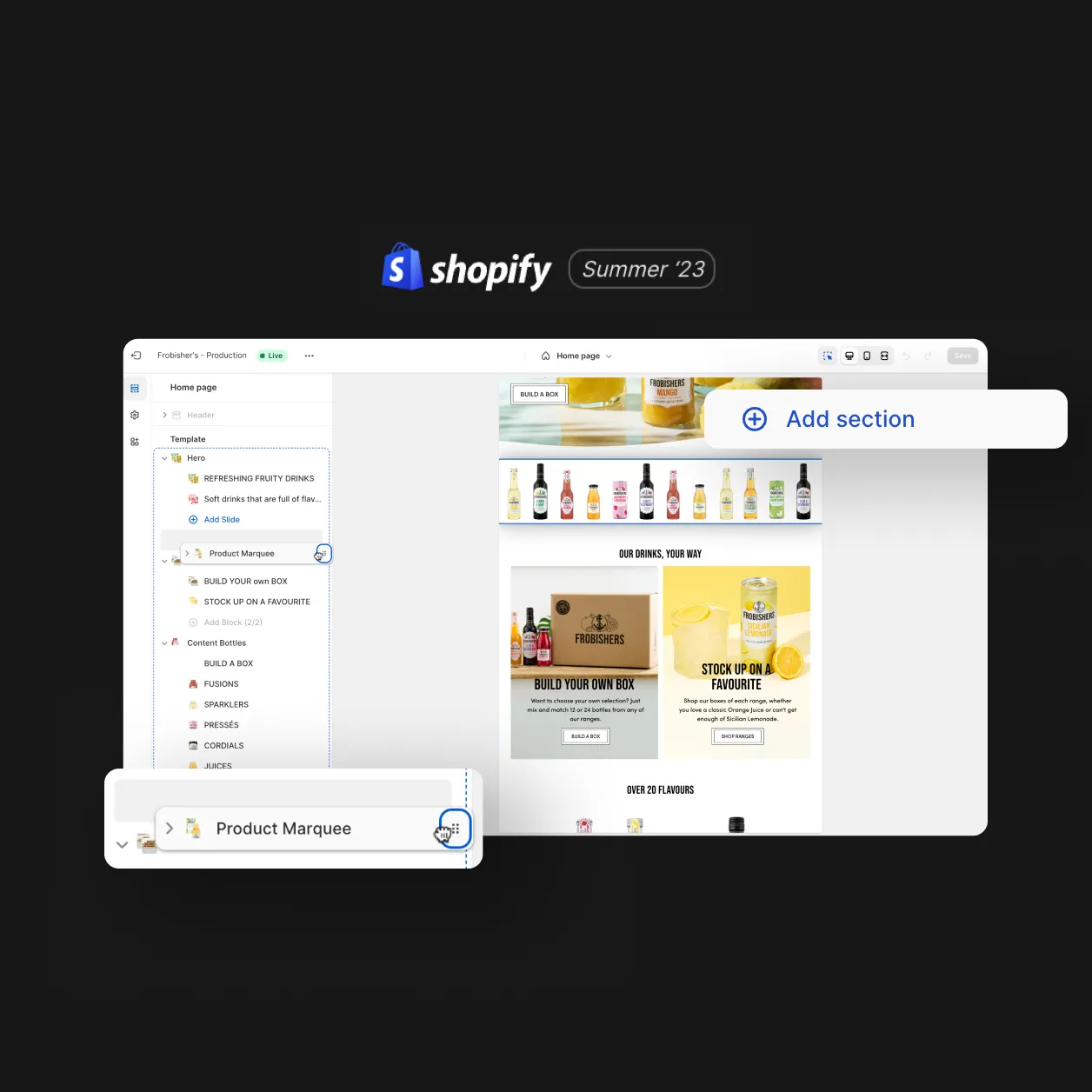Why a Headless website build might be best for your Shopify Plus store
If you’re considering a headless Shopify build, one of the most important decisions you’ll make is selecting the right technology stack. This is your chance to create a platform that’s perfectly tailored to your business – so it’s important to get it right. In this article, we’ll explore some of the best options for your headless ecommerce website.
What is a headless CMS website?
A headless CMS is a content management system that decouples the back-end from the front-end. This allows you to build a front-end using any technology you want, without being limited by the capabilities of the back-end. Content that is housed in a headless CMS is delivered via APIs for seamless display across different devices.
Why use a headless technology stack?
Some benefits of a headless technology stack include greater flexibility and control over the user experience, improved performance and scalability, the ability to use different technologies for different tasks, and enhanced security.
One of the great things about headless architecture is that it gives you the freedom to choose the best technology for each individual task. This means you can mix and match different tools to create a platform that’s perfectly suited to your needs.
Headless Shopify is a popular choice for ecommerce businesses, as it provides all the benefits of Shopify (such as security and scalability) without the need to use Shopify’s front-end.
This gives you the flexibility to create a bespoke user experience for your customers.
Some of the benefits of a headless technology stack include:
– Greater flexibility and control over the user experience
– Improved performance and scalability
– The ability to use different technologies for different tasks
– Enhanced security of online store
Now that we’ve covered some of the basics, let’s take a look at some of the best tech stack options for headless Shopify.
Shopify + React:
One popular option is to combine Shopify with React. React is a JavaScript library that helps you create user interfaces and manage state in your application. It’s also easy to learn if you’re new to front-end development.
Shopify + React is a great choice if you’re looking for flexibility and performance. React is fast, efficient, and can be used to create complex user interfaces. This makes it ideal for headless Shopify projects.
Shopify + Node.js:
Another popular option is to use Shopify with Node.js. Node.js is a JavaScript runtime that allows you to build scalable back-ends for your applications. It’s fast and efficient, making it perfect for headless Shopify projects.
Shopify + Node.js is a great choice if you’re looking for performance and scalability. Node.js is able to handle large amounts of data quickly and efficiently. This makes it ideal for headless Shopify projects.
There are many other tech stack options available, but these are two of the most popular choices for headless Shopify.
Why go headless? What are the use cases?
Headless commerce separates your back-end infrastructure from your front-end customer touch points, so you can build new selling opportunities anywhere – all managed from a central location.
A key application of this is that it can let your development team build with the languages and frameworks they already know. This will be useful because decoupling the frontend and the backend also means your brand can move into omnichannel selling, with virtually any screen can be turned into a digital storefront, from web pages and mobile apps to smart mirrors and wearables.
Headless commerce is perfect for businesses that want to:
- Create a seamless omnichannel experience
- Launch new products and services quickly
- Innovate faster with headless microservices
- Achieve global scale with multi-site management
- Deliver content more efficiently to improve site speed
Can you still use third-party apps on a headless CMS solution?
Yes, you can still lean on the technology partners you would typically use but instead of using a public application, out-of-the-box solution, you would refer to the API to support you. For
Recharge is a good example of this. Recharge is a commerce platform that leverages an API-first ecommerce backend to enable developers to create unique consumer experiences around recurring transaction processes. Their platform independent API, combined with their sophisticated webhook architecture, allows for fully headless client implementations on any front-end.
For merchants who wish to journey towards headless implementation one step at a time, Recharge also offers hosted customisable components like checkout and a self-serve customer portal. These components can speed up a store launch while allowing developers to optimise the frontend at their own pace.
Do I need a headless website solution?
If you’re operating at scale, across multiple markets and with an extensive product catalogue then you will probably need a headless solution. You will likely already be a Shopify Plus merchant and looking for ways to customise your ecommerce experience while also steam-lining the back-end management process.
If you’re a smaller merchant then you might not need a headless solution. You can probably get away with using Shopify’s out-of-the-box functionality and third party apps to create the experience you want for your customers.
So, there you have it – everything you need to know about headless Shopify websites. If you’re looking for flexibility, performance, and scalability then a headless website might be the best option for your Shopify Plus store.
Reach out to our team of experts if you have any questions or need help getting started. We’re always happy to chat.
Design
Inspiring behaviour change through visual experiences. Our digital design services ensure instant clarity and visuals that cut-through in a cluttered market.




